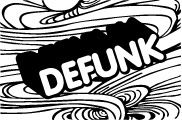Get Noticed
In real life your design goes through thousands of other design asking the audience to stop what they were doing and take notice. This is called the clutter. On top of that clutter audience exposed to these interuptions has formed something in their mind which would take no notice of your design. And this is known as the wall.
Yes, you might have something good to reward your audience should they take time to look at your work but before that take place you have to first get their attention. You have to get past the clutter and climb over the wall.
Find out what to say and how you say it
The first step to solve this is to make what your client is selling interesting. How do you do this? You can be funny, clever and provocative. But all this are mere accents. The language stems from your client's merchandise. If you manage to do this, then it is the first step you can do to break through the clutter and the wall.
Simplicity
Next thing to do is to be simple. Author Robert Louis Stevenson quotes "the only art is to omit". Simple is everything. Simple arguments, simple logic, simple visuals, simple words. If you can't reduce your what you're doing to a few crisp words and phrases, there's something wrong with your design. Simple is believable, easier to remember and breaks through the clutter.
Decide on a clear hiearchy of your design piece. One should dominate the other. What chance has your design has with the clutter if the visuals and words of your design are competing with themselves
Avoiding Fads
Styles and fad might make interesting design but not it is definitely not persuasive. A design that looks like a design means flip page or stash in the bin. Before you play with the type's ascenders and descenders, ask: Is the typo contributing to the brand image? Is it integral to the message? Does it solve a problem? Does it make clearer what you are trying to say?
Design is a communication discipline where every thought, idea, lines, words makes the client's message more vivid, believable and persuasive.
Yes, you might have something good to reward your audience should they take time to look at your work but before that take place you have to first get their attention. You have to get past the clutter and climb over the wall.
Find out what to say and how you say it
The first step to solve this is to make what your client is selling interesting. How do you do this? You can be funny, clever and provocative. But all this are mere accents. The language stems from your client's merchandise. If you manage to do this, then it is the first step you can do to break through the clutter and the wall.
Simplicity
Next thing to do is to be simple. Author Robert Louis Stevenson quotes "the only art is to omit". Simple is everything. Simple arguments, simple logic, simple visuals, simple words. If you can't reduce your what you're doing to a few crisp words and phrases, there's something wrong with your design. Simple is believable, easier to remember and breaks through the clutter.
Decide on a clear hiearchy of your design piece. One should dominate the other. What chance has your design has with the clutter if the visuals and words of your design are competing with themselves
Avoiding Fads
Styles and fad might make interesting design but not it is definitely not persuasive. A design that looks like a design means flip page or stash in the bin. Before you play with the type's ascenders and descenders, ask: Is the typo contributing to the brand image? Is it integral to the message? Does it solve a problem? Does it make clearer what you are trying to say?
Design is a communication discipline where every thought, idea, lines, words makes the client's message more vivid, believable and persuasive.

